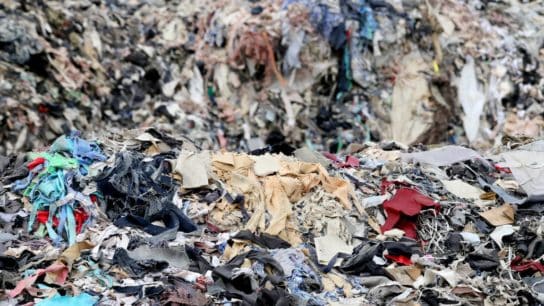In our contemporary society, the prevalence of throwaway culture has reached unprecedented levels, reshaping the ways in which we interact with goods and resources. This article delves into the complexities of throwaway culture, exploring its origins, implications, and the urgent need for sustainable alternatives in a world accustomed to fleeting convenience.
—
Before the days of instant orders, overnight shipping, and mass production, people created clothes and other items that lasted for years. Nowadays, you can find everything you need in a single click or tap on a screen. It might make life easier, but there is no doubt that it is much worse for the planet.
Throwaway culture is the practice of throwing something out after a single use. It can also include things that end up in landfills after a few days or weeks of usage.
Examples of Throwaway Culture Waste
There is no way to make everything last forever, so what counts as throwaway waste? These are a few examples of how people knowingly or accidentally contribute to climate change.
1. Fast Fashion
Major fashion brands produce seasonal styles, but consumer fashion companies create new products much faster. Your favourite stores or apps likely introduce new clothes weekly. It is a form of throwaway culture called fast fashion, which produces 92 million tons of waste annually on a global scale.

The fast fashion industry is the second-biggest consumer of water and is responsible for about 10% of global carbon emissions – more than all international flights and maritime shipping combined.
Fast fashion encourages people to buy new clothes for just a few dollars and throw away their out-of-style clothing. The out-of-style looks are often clothes created just weeks or months ago. The excess fabrics and products sit in landfills for decades, leading to environmental pollution.
You might also like: Fast Fashion and Its Environmental Impact
2. Traditional Construction Methods
When individuals set out to purchase a residential or commercial property, the construction practices involved often contribute significantly to global warming. Heavy machinery powered by fossil fuels operates for months on end, while construction teams generate substantial waste in the form of discarded scaffolding, concrete, and surplus building materials.
The alarming levels of waste generated by the construction industry have spurred experts to devise more sustainable building methods to meet the growing demand for infrastructure. The advent of green construction techniques not only benefits the environment but also promotes better health for all. Forward-thinking construction teams now employ zero-emission materials and cutting-edge air filtration systems to minimize carbon dioxide emissions and safeguard air quality.
You might also like: 5 Ways the Construction Industry Is Getting Greener
3. Coffee Pods
Coffee pods are another examples of an everyday item contributing to our throwaway culture. While convenience has driven the popularity of these products, their environmental impact is undeniable.
Around 39,000 capsules are produced every minute globally, with up to 29,000 of these ending up in landfill.
Plastic coffee pods have inundated our waterways with pollutants, endangering aquatic life globally. Opting for reusable or compostable alternatives can significantly reduce your ecological footprint and contribute to a healthier planet.

4. Six-Pack Rings
Similarly, the ubiquity of plastic six-pack rings poses a grave threat to our ecosystems, as these materials often end up in landfills after a single use. Choosing beverages that eschew plastic packaging can help mitigate environmental harm and lessen your carbon footprint.
5. Paper Towels
Even seemingly innocuous items like paper towels, used in households on a daily basis, have a detrimental effect on the environment. The deforestation required to produce these disposable products, coupled with their slow decomposition in landfills, underscores the urgent need for more sustainable alternatives such as hand towels or washcloths.
Live a More Sustainable Lifestyle
Adopting a more sustainable lifestyle is not only beneficial for the planet but also for personal well-being. By making conscious choices to reduce single-use waste, whether by engaging with eco-conscious construction practices or embracing biodegradable alternatives in daily routines, individuals can play a vital role in minimising their carbon footprint and fostering a healthier, more environmentally friendly world for future generations.”
This article was originally published on December 21, 2022.
You might also like: The Truth About Online Shopping and Its Environmental Impact
How can I contribute to a more sustainable planet?
- 🗳️ Vote for Climate Action: Exercise your democratic rights by supporting candidates and policies that prioritize climate change mitigation and environmental protection. Stay informed with Earth.Org’s election coverage.
- 👣 Reduce Your Carbon Footprint: Make conscious choices to reduce your carbon footprint. Opt for renewable energy sources, conserve energy at home, use public transportation or carpool, and embrace sustainable practices like recycling and composting.
- 💰 Support Environmental Organizations: Join forces with organizations like Earth.Org and its NGO partners, dedicated to educating the public on environmental issues and solutions, supporting conservation efforts, holding those responsible accountable, and advocating for effective environmental solutions. Your support can amplify their efforts and drive positive change.
- 🌱 Embrace Sustainable Habits: Make sustainable choices in your everyday life. Reduce single-use plastics, choose eco-friendly products, prioritize a plant-based diet and reduce meat consumption, and opt for sustainable fashion and transportation. Small changes can have a big impact.
- 💬 Be Vocal, Engage and Educate Others: Spread awareness about the climate crisis and the importance of environmental stewardship. Engage in conversations, share information, and inspire others to take action. Together, we can create a global movement for a sustainable future.
- 🪧 Stand with Climate Activists: Show your support for activists on the frontlines of climate action. Attend peaceful protests, rallies, and marches, or join online campaigns to raise awareness and demand policy changes. By amplifying their voices, you contribute to building a stronger movement for climate justice and a sustainable future.
For more actionable steps, visit our ‘What Can I do?‘ page.
This story is funded by readers like you
Our non-profit newsroom provides climate coverage free of charge and advertising. Your one-off or monthly donations play a crucial role in supporting our operations, expanding our reach, and maintaining our editorial independence.
About EO | Mission Statement | Impact & Reach | Write for us













